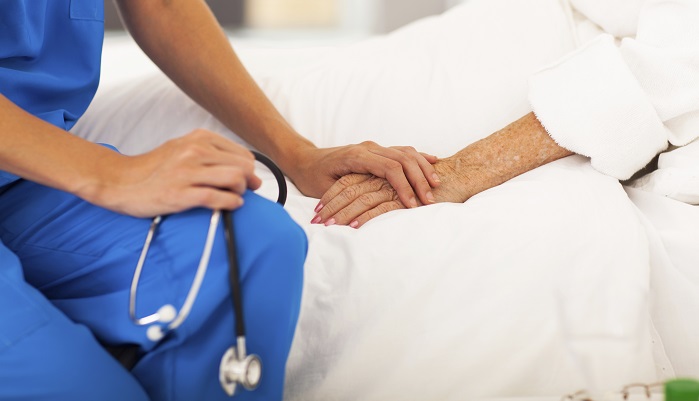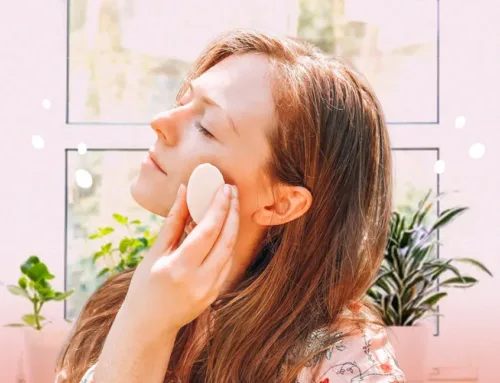Prevent bed sores because they are easier – and cheaper – to avoid than to treat.

What are bed sores?
Bed sores, also called decubitus ulcers or pressure ulcers, are areas of broken skin that can develop when an individual is bedridden, can’t move around a lot, or uses a wheelchair or bedside chair for long periods of time.
When an individual’s body presses against the firm surface of the bed or chair, the skin becomes damaged from the temporary cut of blood supply, and pressure sores may develop.
Pressure is the main cause of bed sores, but there are other factors that can contribute to the problem. These include:
1. Age: People over 85 have a higher risk of developing pressure ulcers since the skin usually becomes more delicate and fragile with age.
2. Moisture: Perspiration and incontinence issues make skin that is under pressure more likely to suffer injury.
3. Decreased movement: Many bedridden patients can help avoid bed sores by lifting themselves off their bed sheets or rolling from side to side. Doing this throughout the day allows a steady supply of oxygen and nutrients to get to the skin that is pressing against the bed. In the absence of those small movements, however, patients who are significantly immobile are more susceptible to bed sores.
4. Shearing and friction: When patients are bedridden, shearing and friction occurs each time the patient slides across the bed sheets. This causes skin to stretch and can impair blood circulation in the skin, leading to skin sores.
5. Poor nutrition: Pressure sores are more likely to develop in people who don’t get enough protein, vitamins and minerals.
How to prevent bed sores:
- Position Changes
- Skin Care
- Nutrition
- Quit Smoking & Stay Active
1. Position Changes
Repositioning is the number one prevention for pressure sores.

For bedridden patient who are suffering from incontinence, protecting beds with positioning underpads may be a good idea because they have extra strength to withstand frequent turning and repositioning.
When repositioning in a bed, remember the following:
- Reposition the patient frequently. Once every two hours should be Repositioning Time so that the skin never remains under pressure for long periods of time.
- Look into devices to help with repositioning. If the patient has enough upper body strength, a device such as a trapeze bar can be used for self-repositioning. If the patient needs help, reduce friction and shearing by using bed linens to lift and reposition.
- Try a specialized mattress. There are many products that can help with positioning, relieve pressure and protect vulnerable areas, including: special cushions, a foam mattress pad, sheepskin, an air-filled mattress or a water-filled mattress. Low air loss mattress systems have been proven to reduce the likelihood that a pressure ulcer will form.
- Adjust the elevation of the patient’s bed. If the patient’s hospital bed can be elevated at the head, try not to raise it more than 30 degrees. This helps prevent the patient from sliding down in bed, which can damage the skin.
- Use cushions to protect bony areas. Bony areas need special protection, which can be provided with proper positioning and cushioning. Rather than lying directly on a hip, lie at an angle with cushions supporting the back or front. Also use cushions to relieve pressure against and between the knees and ankles, and protect heels with cushions below the calves.
Repositioning in a wheelchair is another important way to prevent pressure sores.

One way to relieve pressure is to reposition with the use of reclining wheelchairs. Natural sheepskin pads are also helpful to reduce pressure on the skin. You can also use a cushion to ease up the pressure and help ensure that the patient is well-positioned in the chair. Various cushions are available, such as foam, gel and water filled. A physical therapist can give advice on how to place them and their role in regular repositioning.
To learn more about wheelchair cushion types, check out the cushion category of our wheelchair buying guide.
2. Skin Care
By protecting and monitoring the condition of the skin, you can prevent pressure sores and identify sores early on so that they can be treated before they worsen.
Protect the skin. Protect the skin by keeping it clean, dry, and moisturized.
• Clean the skin with mild soap and warm water or a no-rinse cleanser. (Do not use products that contain alcohol, because they can dry out the skin.) Gently pat skin dry, avoiding rubbing or scrubbing. Do not rub skin with a towel.
• Apply skin protectants, lotions and moisturizing cream on skin often.
• Change bedding and clothing frequently. Keep an eye out for buttons on clothing and wrinkles or crumbs on the bedding that can irritate the skin.
• Use sheepskin slippers or heel protectors and elbow pads to reduce friction on heels and elbows.
- Inspect the skin daily.
Inspect the skin daily to identify vulnerable areas or early signs of bed sores. If the patient has enough mobility, they may be able to do this alone, with the help of a mirror. However, most patients will probably need the help of a caregiver to do a thorough skin inspection. - Manage incontinence to keep the skin dry.
If the patient has incontinence, do everything you can to prevent exposing the skin to moisture and bacteria. This includes: regularly scheduled help with urinating, frequent diaper changes, putting protective lotions on healthy skin, and/or the use of urinary catheters or rectal tubes. - Dry technology chucks can also help keep skin dry for longer.
3. Nutrition
A doctor, dietitian or other care team member can recommend nutritional changes to help improve the health of the patient’s skin.

- Choose a healthy diet.
Dietary changes or supplements, such as nutrition shakes, vitamin C, Omega 3 and zinc, may be advised. - Keep the skin hydrated with sufficient drinking.
Good hydration is important for maintaining healthy skin. Find out how much to drink and learn the signs of poor hydration so you can stay on top of things. - Help the patient if eating is difficult.
Patients with limited mobility or significant weakness may need help with eating in order to get adequate nutrition. As their caregiver, they need you to be there for them.
4. Quit Smoking & Stay Active
Other important strategies that can help decrease the risk of bed sores include the following:
- Quit smoking.
If the patient smokes, it may be time to think about quitting. Talk to the patient’s doctor if they need help. - Stay active.
Limited mobility is a key factor in causing pressure sores. Daily exercise matched to the patient’s abilities can help maintain healthy skin. A physical therapist can recommend an appropriate exercise program that improves blood flow, builds up vital muscle tissue, stimulates appetite and strengthens the body.
Need help finding the right product to help you or your loved one avoid bed sores? Contact us now and one of our experts will be glad to help!
Disclaimer: No information presented on this website is medical advice or intended as a substitute for the advice of a physician. All information on this website concerning medical conditions is from publicly available sources.



